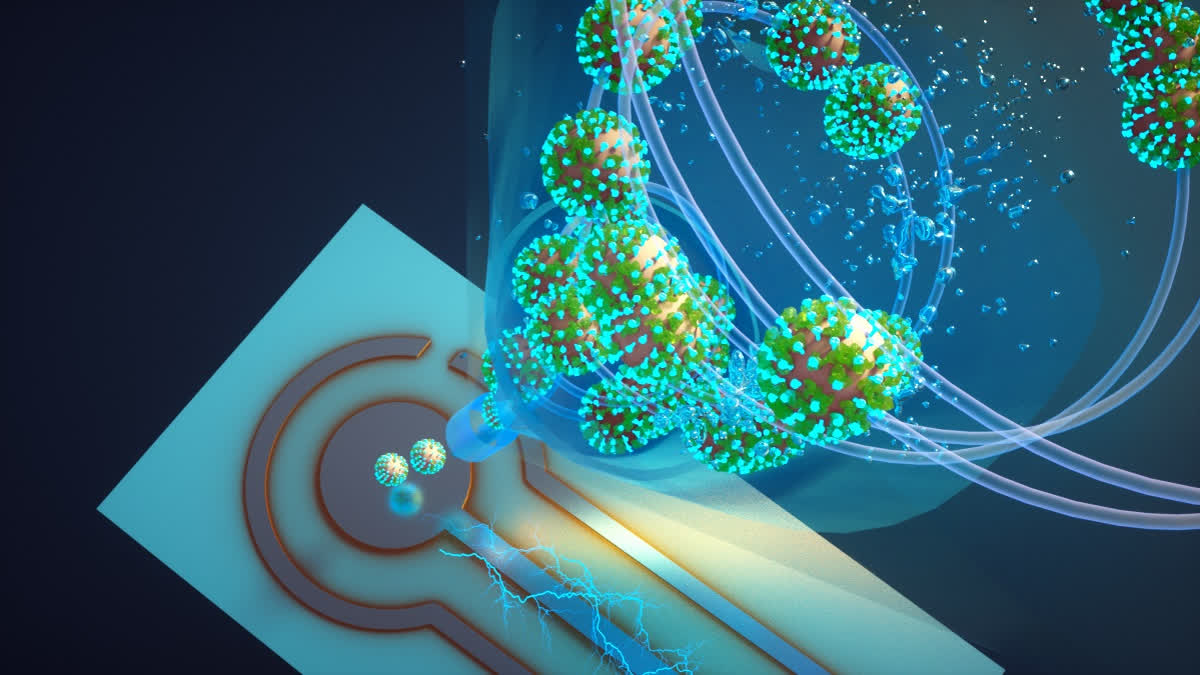New Delhi: Researchers have developed a real-time air monitor that they say can detect any of the SARS-CoV-2 virus variants in a room in about five minutes. The inexpensive, proof-of-concept device was developed by researchers at Washington University in St. Louis, US, by combining recent advances in aerosol sampling technology and an ultrasensitive biosensing technique.
The device can be used in hospitals and health care facilities, schools and public places to help detect SARS-CoV-2 and potentially monitor for other respiratory virus aerosols, such as influenza and respiratory syncytial virus (RSV). Results of their work on the monitor, which they say is the most sensitive detector available, are published in the journal Nature Communications.
There is nothing at the moment that tells us how safe a room is," said John Cirrito, a professor of neurology at Washington University. "If you are in a room with 100 people, you don't want to find out five days later whether you could be sick or not. The idea with this device is that you can know essentially in real time, or every 5 minutes, if there is a live virus," Cirrito said.
The researchers had previously developed a micro-immunoelectrode (MIE) biosensor that detects amyloid beta as a biomarker for Alzheimer's disease and wondered if it could be converted into a detector for SARS-CoV-2. To do so, they exchanged the antibody that recognises amyloid beta for a nanobody from llamas that recognises the spike protein from the SARS-CoV-2 virus.
David Brody, a former faculty member at Washington University, and an author on the paper, developed the nanobody in his lab at the National Institutes of Health (NIH). The nanobody is small, easy to reproduce and modify and inexpensive to make, the researchers said. "The nanobody-based electrochemical approach is faster at detecting the virus because it doesn't need a reagent or a lot of processing steps, said Carla Yuede, an associate professor at Washington University.
